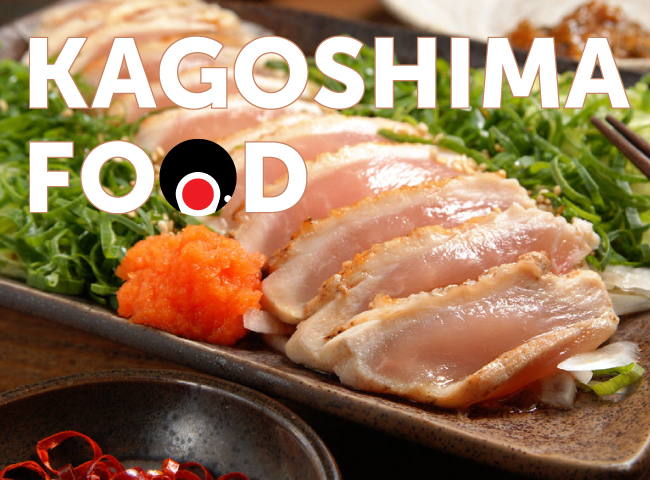A Look Inside Japanese Bento Boxes: Types & Ingredients
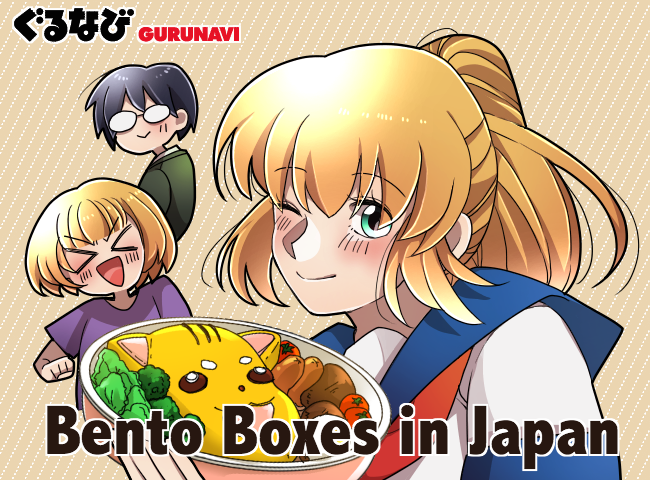

Put simply, a “bento” or “bento box” is a Japanese lunchbox. What separates it from the ham sandwich and soda many of us carried in a Spiderman lunchbox in elementary school is the attention to detail and the balance of the ingredients. A proper bento lunch is crafted with care and should be a complete meal with a variety of tastes, textures, and food groups. The meal typically includes rice, meat or fish, and pickled vegetables. The Japanese are known for their ability to make use of every last bit of space, and lunchboxes are no exception–the meal is packed neatly and tightly into small square or rectangular shape, making it easy for children and busy office workers to transport. Traditionally, the mother of the family prepares the meal for her kids and husband, though today bento boxes are often purchased from convenience stores and restaurants.
Types of Bento
There are various types of bento, each with its own purpose and appropriate setting. These are the most common types of bento boxes in Japan:
Marukonouchi Bento
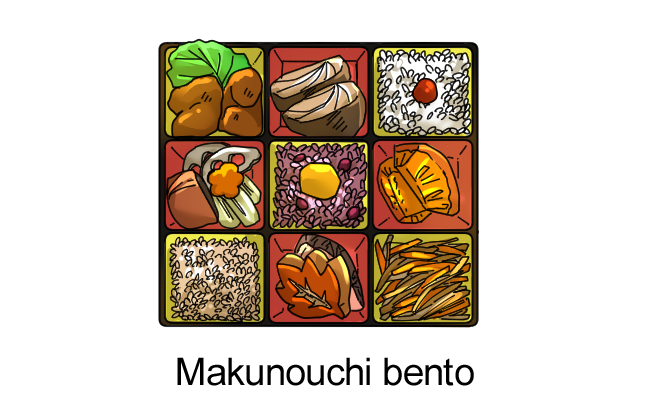
Prepared by a caterer, these are the two-section bento boxes typically found in convenience stores, supermarkets, and department stores. One side of the box contains a rice dish while the other holds small side dishes. This style of bento was originally served in Kabuki theaters as a meal for actors and audience members in between acts.
Koraku Bento
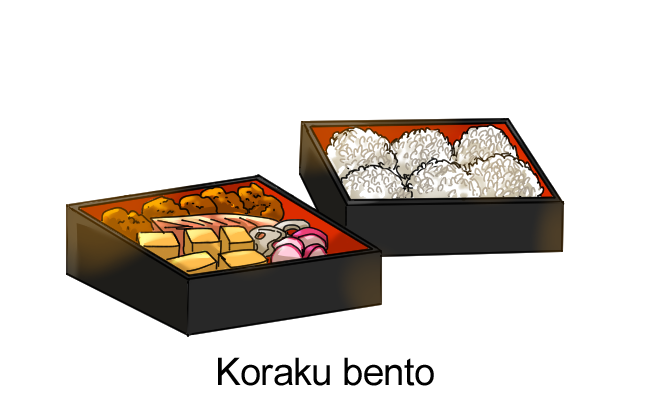
Translating to “picnic lunchbox” in Japanese, these large bento are made to be shared among a small group. They are especially common during hanami (cherry blossom viewing) season in late March and early April. Like many traditional Japanese dishes, the items included in the lunchbox are chosen deliberately to reflect the season in which it was prepared. Onigiri (triangular rice balls) and maki-zushi rolls are standard fare in a koraku bento.
Hinomaru Bento
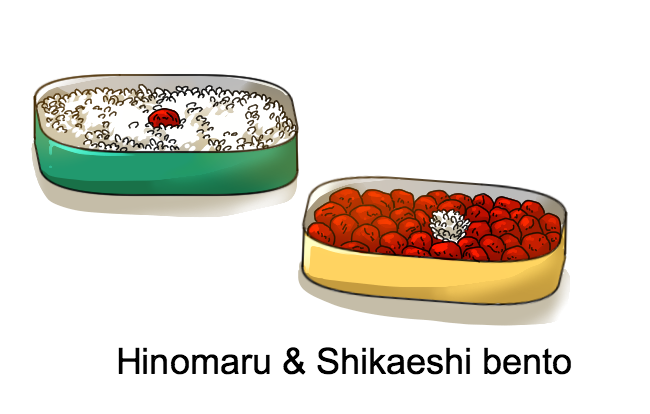
Literally, “circle of the sun”, hinomaru refers to the Japanese flag and symbol of Japan. Like the flag, this meal is elegant in its simplicity; the base is white rice topped with a single red umeboshi (pickled plum) to represent the sun, with a side dish of meat or fish. Aside from keeping things patriotic, the plum also acts as a natural preservative to keep the meal fresh.
The Shikaeshi Bento
You know you have done something wrong if you get one of these. The “revenge lunchbox” is a passive yet effective way a wife can give her husband a very unpleasant surprise during his lunch break. Upon opening the lunchbox, he may find an embarrassing design, a box filled with nothing but corn, or a meal that is entirely inedible, such as uncooked rice and a raw egg.
Aisai Bento

The aisai bento, or “bento made by loving wives”, is exactly what it sounds like. In addition to making the children’s lunches, the mother of the family prepares this special lunch for her husband to be taken to work. Similarly, young women in relationships sometimes prepare a handmade bento for their significant other during hanami season.
Ekiben
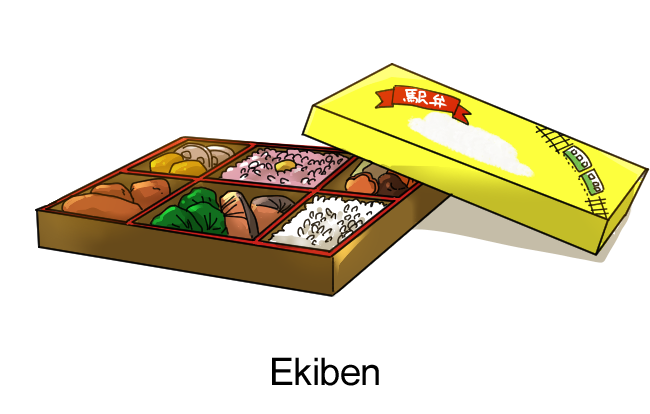
A combination of eki (train station) and bento, these high-quality lunchboxes are sold at major train stations, including on the platform and on the train. The ekiben is a complete meal served in a plastic, wood, or ceramic box along with a set of disposable chopsticks. The ingredients in the lunchbox typically reflect the staple foods of the area, with some stations becoming nationally recognized for the quality of their bento boxes. Similar styles of railway meals have become popular in other East Asian countries as well, particularly Taiwan.
Kyaraben

Usually made for children, kyaraben (“character bento”) are lunchboxes in which rice and other bento box food are shaped and designed to look like popular characters from anime, manga, or video games. In addition to adding a bit of color to the standard lunchbox, the cute characters also help to encourage kids to eat foods they do not particularly enjoy. Aside from famous characters, kyaraben may also include animals or natural scenery to reflect the season or holiday.
Types of Bento Lunch Box Containers

Convenience store bentos are usually made from disposable plastic, but reusable containers are made from a variety of materials with a wide range of quality and price. Standard bento containers are made from aluminum, plastic, glass, stainless steel, or silicon, and will typically last quite a while if cared for properly. The more expensive options include thermal materials for keeping food warm, bamboo, lacquered wood, and melamine. The more elegant wooden containers are sometimes kept as family heirlooms.
Popular Bento Box Food
Rice – This is the base ingredient of just about every bento; one without it would be like a sandwich with no bread. The rice can be prepared in several ways, such as hakumai (standard white rice), genmai (brown rice), sekihan (rice cooked with red beans), zakkokumai (rice with mixed grains), noriben (rice covered with a sheet of nori seaweed), and wakame gohan (rice mixed with seaweed).

Read: 12 Popular Japanese Rice dishes
Umeboshi - pickled sour Japanese plums.
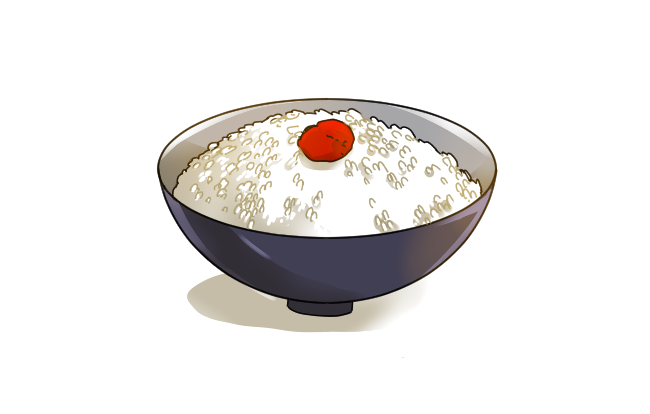
Salads - Vegetables and salads are often chosen to reflect the season.

Read: 9 Popular Japanese Salads & Vegetable Dishes
Tamagoyaki - a sweet Japanese rolled omelette.
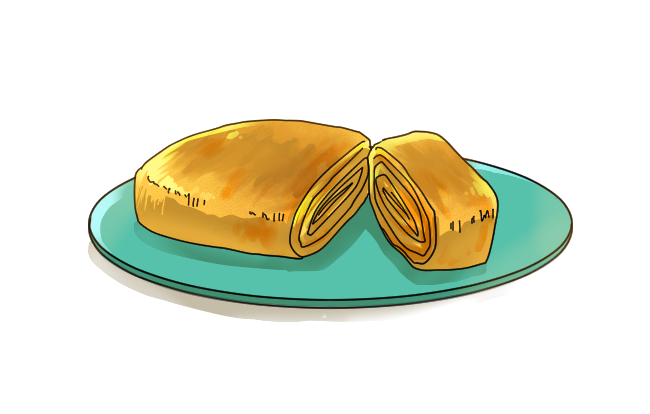
Agemono - Deep-fried foods include chicken karaage, tempura, croquettes, and fried fish cakes.

Tonkatsu - A heavily breaded, deep-fried pork cutlet served with a brown sauce made specifically for tonkatsu.

Grilled fish - Typically mackerel, salmon, or unagi (eel).
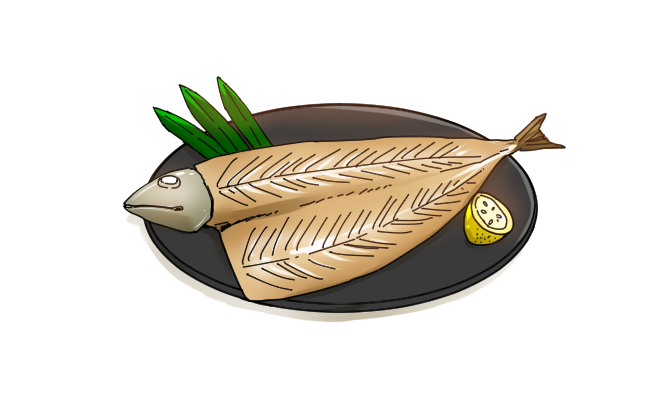
Read: Grilled Fish in Japan
Nimono - Slowly simmered fish, meat, or vegetables reminiscent of home cooking.
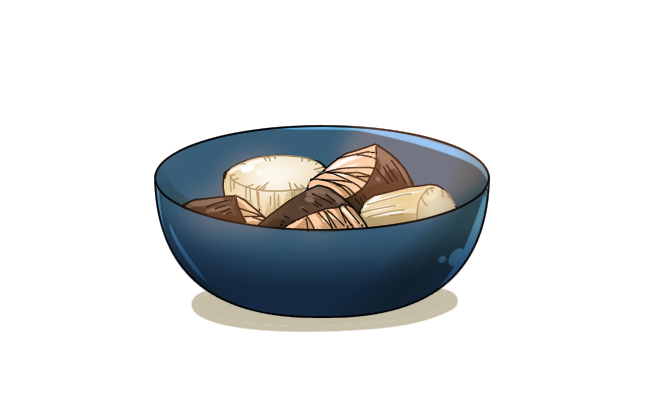
Stewed beef - Gyudon, a flavorful layer of beef served atop a bed of rice.

Sushi - A Japanese staple, typically raw seafood served on top of pressed rice ball.
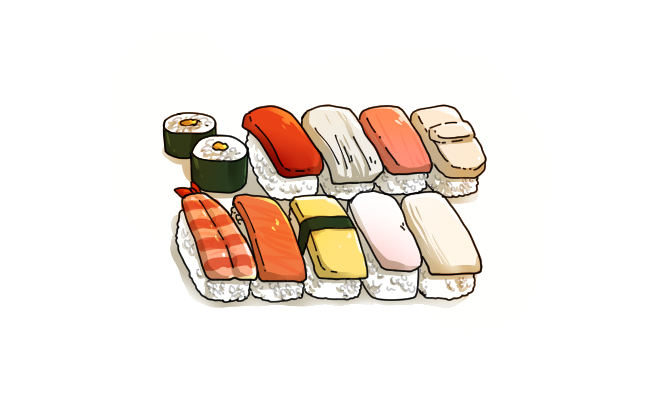
Read: 28 Popular Sushi Toppings - A Guide to Nigiri
Bento Boxes Are a Cheap & Nourishing Traditional Japanese Meal
Whether you are a foodie, adventure traveler, or just visiting on business, bento boxes are a great option for anyone looking for an authentic local experience.









